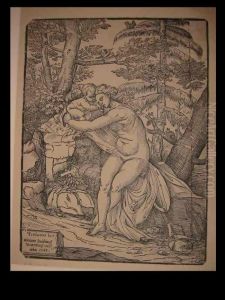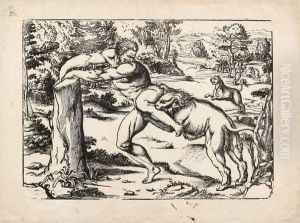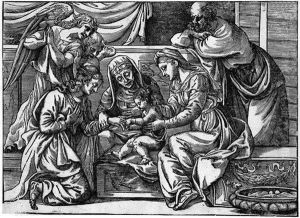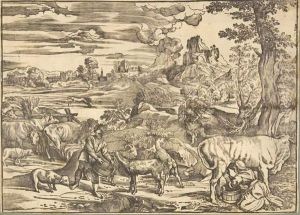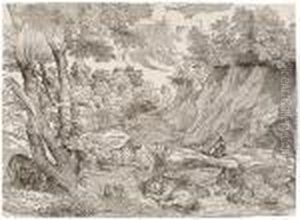Niccolo Boldrini Paintings
Niccolò Boldrini was an Italian engraver known for his woodcuts, born around 1510, with most of his notable work being produced in the 16th century. Although the precise details of his early life and training are not well documented, Boldrini is recognized for his close association with the Venetian school and his collaborations with prominent artists of the time, including Titian. There is little information available about his personal life or his death, which is believed to have occurred after 1571, based on the latest known dates found on his works.
Boldrini's work is characterized by its meticulous detail and the influence of the Renaissance style. He is particularly noted for his skillful use of the woodcut technique to replicate the tonal variations and subtleties of paintings and drawings, a task that requires a high level of craftsmanship and innovation in the engraving process. One of his most famous works is the series of woodcuts based on Titian’s paintings, where Boldrini demonstrated his exceptional ability to translate the painterly qualities of Titian’s work into the medium of woodcut, maintaining the original's depth and texture.
Throughout his career, Boldrini contributed significantly to the dissemination of the Renaissance style across Europe. By translating masterpieces of Italian Renaissance painting into prints, he made these works accessible to a wider audience, playing a crucial role in the spread of Renaissance artistic ideals. Despite the scarcity of biographical details, Niccolò Boldrini’s legacy is preserved through his art, which continues to be studied for its technical excellence and its role in the history of printmaking.
